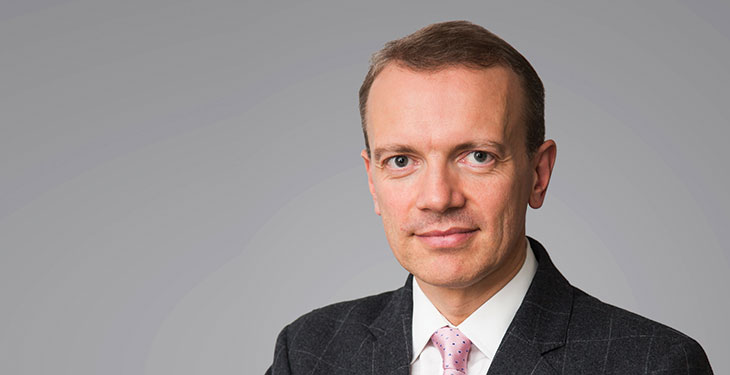New onshore wind installations in 2020 were around 20% less than WindEurope had predicted pre-COVID, however, offshore wind installations were not affected much by the crisis. European manufacturers have adapted to the situation, and we don’t see significant supply-chain disruptions any longer. And Contracts for Difference are one of the best solutions to revive Romania’s wind energy impetus, but Romania needs to invest in grid infrastructure and make its grid planning fit for the green transition, Giles Dickson, CEO of WindEurope, tells Energynomics magazine, in an exclusive interview.
How did the Covid pandemic impact 2020 and how will it impact the wind energy markets and trades volumes in 2021? What are the key pressures we see on pricing and demand, for 2021 and the next year?
During the first wave of COVID in the spring we saw some serious disruptions in international supply chains for wind energy components. Some hard-hit countries like Spain or Italy also ordered plant closures, and the overall mobility of workers and goods within the European Union was hampered. This mainly affected the construction of new onshore wind farms. New onshore wind installations in 2020 were around 20% less than WindEurope had predicted pre-COVID, though we still managed to build 11.8 GW of new onshore wind across the year as a whole. Offshore wind installations were not affected much. With 2.9 GW of new capacity in 2020, offshore wind installations met our forecasts.
As we speak (February 2021) European manufacturers have adapted to the situation, and we don’t see significant supply-chain disruptions any longer. Operations and new installations continue despite the existing COVID measures. For 2021 it will remain crucial that Europe ensures the free flow of goods and workers across borders.
What are the future key changes that Green Deal and new CE emission and RES targets bring to our markets?
The Green Deal objective is crystal-clear. The EU wants to be climate-neutral by 2050. It wants to build its future energy system on renewable energies. Wind energy will be 50% of all electricity consumed in the EU by then. And electricity will be over half of Europe’s energy, up from less than a quarter today. Just take e-mobility: many processes that are currently based on fossil-fuels will be electric in the future. With the new EU Commissions new 2030 target of 55% the EU takes an important step in that direction. It will translate to a 38-40% share of renewables in total energy consumption by 2030. This means much more wind energy.
How will the new market design be a better fit, according to Green Deal, for renewables, and what should countries such as Romania do to have a market fit for RES?
The costs of new wind energy reduced dramatically over the past years. Wind energy is now one of the cheapest forms of electricity production in Europe. And the capacity factors continue to increase. This means we produce electricity more reliably. New wind farms don’t need feed-in tariffs or certificates like they used to. What they need is revenue stabilisation mechanisms plus visibility from governments on how much new wind they want and when. Contracts-for-Difference is the best model. They are cheap for governments. Governments payout as well as getting money back from the operators of wind farms. Contracts-for-Difference is popular. They are now used in the UK, Denmark, France, Poland, Spain and Lithuania.
How should Romania and other countries remove barriers better and faster, to be ready for new investment in both onshore and offshore wind?
There is an appetite from investors and developers to accelerate wind energy in Romania. But there are still many barriers. Romania needs to invest in grid infrastructure and make its grid planning fit for the green transition. Just like other countries such as Greece did. This is critical now that the EU has agreed on new 2030 targets that will translate into higher shares of renewables.
But there is good news: the EU Recovery Package offers the perfect opportunity to finance such investments. Member States like Romania should make investments in renewable infrastructure a key priority when drafting their National Recovery Plans.
What will be the main driver for the growth of the wind industry in the years to come? How should a country like Romania take advantage of that?
The main driver will be the European Green Deal but also the competitiveness of modern wind turbines – and the fact that wind energy makes economic sense. Europe wants to accelerate the phase-out of dirty coal. New nuclear plants are very expensive – the costs of current projects in the UK and France are exploding. And the EU only wants gas to be a transition towards a renewable energy system. I fully agree with European Commission Vice-president Frans Timmermans. During an online energy summit in Bucharest Timmermans recently said: “the longer you wait with the transition to renewables, the more difficult and the more expensive it is going to become.” Romania should shift investments into decarbonised energy generation now and lead the green transition in Eastern Europe.
—————————————-
This interview firstly appeared in the printed edition of Energynomics Magazine, issued in March 2021.
In order to receive the printed or electronic this issue of Energynomics Magazine, we encourage you to write us at office [at] energynomics.ro to include you in our distribution list. All previous editions are available HERE.

